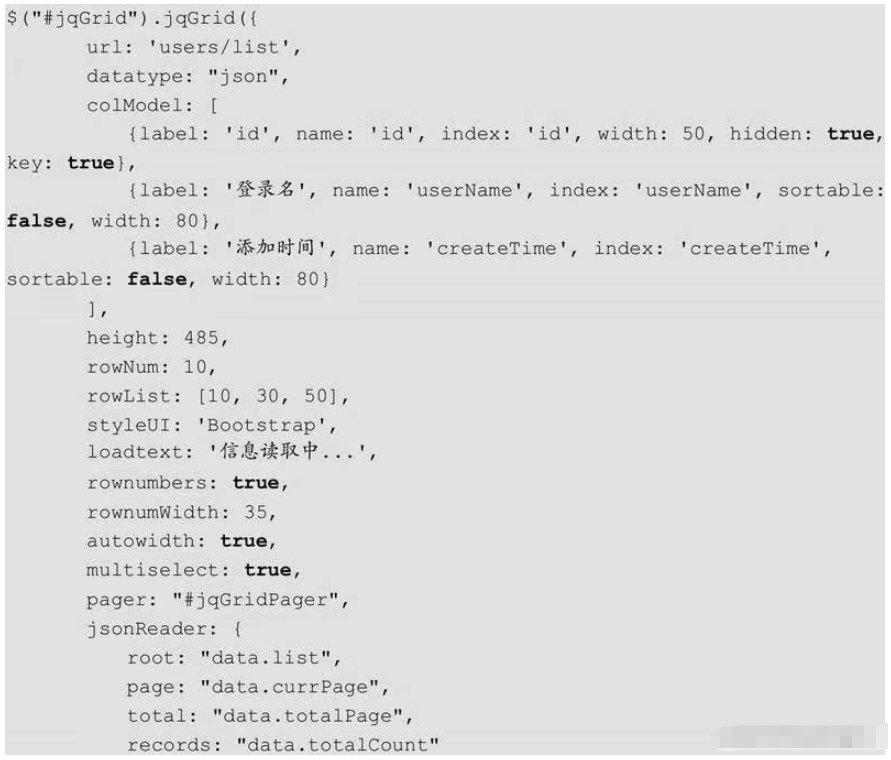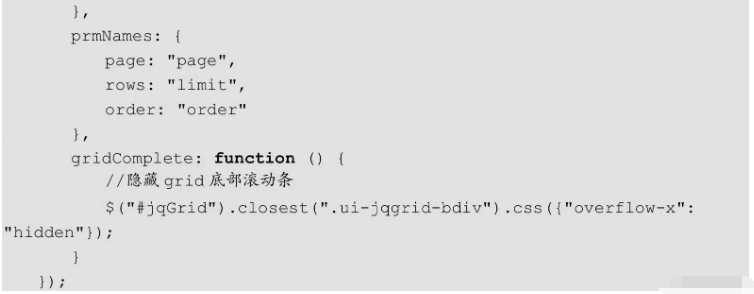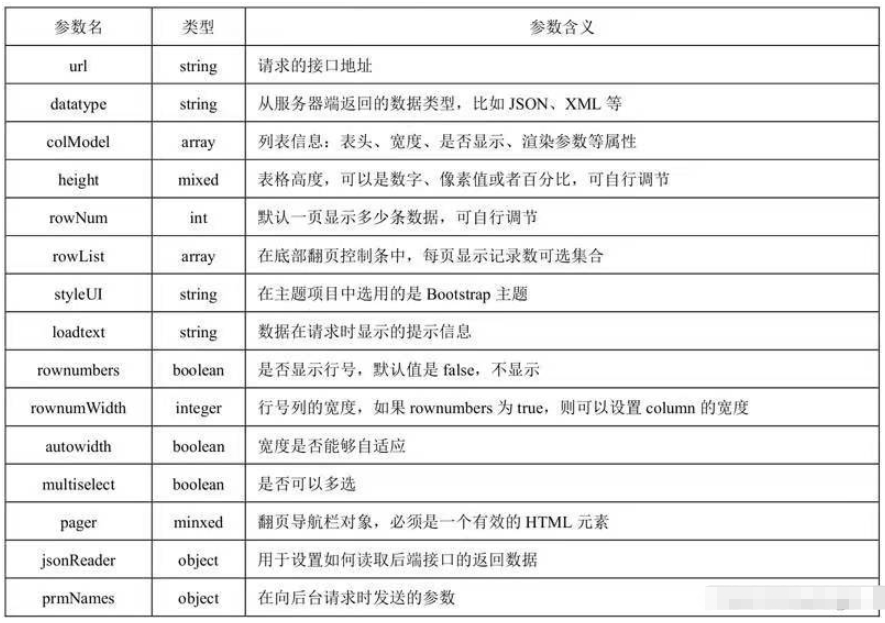您好,登錄后才能下訂單哦!
您好,登錄后才能下訂單哦!
這篇“springboot分頁功能怎么實現”文章的知識點大部分人都不太理解,所以小編給大家總結了以下內容,內容詳細,步驟清晰,具有一定的借鑒價值,希望大家閱讀完這篇文章能有所收獲,下面我們一起來看看這篇“springboot分頁功能怎么實現”文章吧。
分頁功能作為各類網站和系統不可或缺的部分(例如百度搜索結果的分頁等),當一個頁面數據量大的時候分頁作用就體現出來的,其作用有以下5個。
(1)減少系統資源的消耗
(2)提高數據庫的查詢性能
(3)提升頁面的訪問速度
(4)符合用戶的瀏覽習慣
(5)適配頁面的排版
由于需要實現分頁功能,所需的數據較多
DROP TABLE IF EXISTS tb_user; CREATE TABLE tb_user ( id int(11) NOT NULL AUTO_INCREMENT COMMENT '主鍵id', name varchar(100) NOT NULL DEFAULT '' COMMENT '登錄名', password varchar(100) NOT NULL DEFAULT '' COMMENT '密碼', PRIMARY KEY (id) USING BTREE ) ENGINE = InnoDB CHARACTER SET = utf8; insert into tb_user (id,name,password) value (1,'C','123456'), (2,'C++','123456'), (3,'Java','123456'), (4,'Python','123456'), (5,'R','123456'), (6,'C#','123456'); insert into tb_user (id,name,password) value (7,'test1','123456'); insert into tb_user (id,name,password) value (8,'test2','123456'); insert into tb_user (id,name,password) value (9,'test3','123456'); insert into tb_user (id,name,password) value (10,'test4','123456'); insert into tb_user (id,name,password) value (11,'test5','123456'); insert into tb_user (id,name,password) value (12,'test6','123456'); insert into tb_user (id,name,password) value (13,'test7','123456'); insert into tb_user (id,name,password) value (14,'test8','123456'); insert into tb_user (id,name,password) value (15,'test9','123456'); insert into tb_user (id,name,password) value (16,'test10','123456'); insert into tb_user (id,name,password) value (17,'test11','123456'); insert into tb_user (id,name,password) value (18,'test12','123456'); insert into tb_user (id,name,password) value (19,'test13','123456'); insert into tb_user (id,name,password) value (20,'test14','123456'); insert into tb_user (id,name,password) value (21,'test15','123456'); insert into tb_user (id,name,password) value (22,'test16','123456'); insert into tb_user (id,name,password) value (23,'test17','123456'); insert into tb_user (id,name,password) value (24,'test18','123456'); insert into tb_user (id,name,password) value (25,'test19','123456'); insert into tb_user (id,name,password) value (26,'test20','123456'); insert into tb_user (id,name,password) value (27,'test21','123456'); insert into tb_user (id,name,password) value (28,'test22','123456'); insert into tb_user (id,name,password) value (29,'test23','123456'); insert into tb_user (id,name,password) value (30,'test24','123456'); insert into tb_user (id,name,password) value (31,'test25','123456'); insert into tb_user (id,name,password) value (32,'test26','123456'); insert into tb_user (id,name,password) value (33,'test27','123456'); insert into tb_user (id,name,password) value (34,'test28','123456'); insert into tb_user (id,name,password) value (35,'test29','123456'); insert into tb_user (id,name,password) value (36,'test30','123456'); insert into tb_user (id,name,password) value (37,'test31','123456'); insert into tb_user (id,name,password) value (38,'test32','123456'); insert into tb_user (id,name,password) value (39,'test33','123456'); insert into tb_user (id,name,password) value (40,'test34','123456'); insert into tb_user (id,name,password) value (41,'test35','123456'); insert into tb_user (id,name,password) value (42,'test36','123456'); insert into tb_user (id,name,password) value (43,'test37','123456'); insert into tb_user (id,name,password) value (44,'test38','123456'); insert into tb_user (id,name,password) value (45,'test39','123456'); insert into tb_user (id,name,password) value (46,'test40','123456'); insert into tb_user (id,name,password) value (47,'test41','123456'); insert into tb_user (id,name,password) value (48,'test42','123456'); insert into tb_user (id,name,password) value (49,'test43','123456'); insert into tb_user (id,name,password) value (50,'test44','123456'); insert into tb_user (id,name,password) value (51,'test45','123456');
新建一個util包并在包中新建Result通用結果類,代碼如下:
package ltd.newbee.mall.entity;
public class User {
private Integer id;
private String name;
private String password;
public Integer getId() {
return id;
}
public void setId(Integer id) {
this.id = id;
}
public String getName() {
return name;
}
public void setName(String name) {
this.name = name;
}
public String getPassword() {
return password;
}
public void setPassword(String password) {
this.password = password;
}
}后端接口返回的數據會根據以上格式進行數據封裝,包括業務碼、返回信息、實際的數據結果。這個格式是開發人員自行設置的,如果有其他更好的方案也可以進行適當的調整。
在util包中新建PageResult通用結果類,代碼如下:
package ltd.newbee.mall.util;
import java.util.List;
/**
* 分頁工具類
*/
public class PageResult {
//總記錄數
private int totalCount;
//每頁記錄數
private int pageSize;
//總頁數
private int totalPage;
//當前頁數
private int currPage;
//列表數據
private List<?> list;
/**
*
* @param totalCount 總記錄數
* @param pageSize 每頁記錄數
* @param currPage 當前頁數
* @param list 列表數據
*/
public PageResult(int totalCount, int pageSize, int currPage, List<?> list) {
this.totalCount = totalCount;
this.pageSize = pageSize;
this.currPage = currPage;
this.list = list;
this.totalPage = (int) Math.ceil((double) totalCount / pageSize);
}
public int getTotalCount() {
return totalCount;
}
public void setTotalCount(int totalCount) {
this.totalCount = totalCount;
}
public int getPageSize() {
return pageSize;
}
public void setPageSize(int pageSize) {
this.pageSize = pageSize;
}
public int getTotalPage() {
return totalPage;
}
public void setTotalPage(int totalPage) {
this.totalPage = totalPage;
}
public int getCurrPage() {
return currPage;
}
public void setCurrPage(int currPage) {
this.currPage = currPage;
}
public List<?> getList() {
return list;
}
public void setList(List<?> list) {
this.list = list;
}
}在UserDao接口中新增兩個方法findUsers()和getTotalUser(),代碼如下所示:
/** * 返回分頁數據列表 * * @param pageUtil * @return */ List<User> findUsers(PageQueryUtil pageUtil); /** * 返回數據總數 * * @param pageUtil * @return */ int getTotalUser(PageQueryUtil pageUtil);
在UserMapper.xml文件中新增這兩個方法的映射語句,代碼如下所示:
<!--分頁-->
<!--查詢用戶列表-->
<select id="findUsers" parameterType="Map" resultMap="UserResult">
select id,name,password from tb_user
order by id desc
<if test="start!=null and limit!=null">
limit #{start}.#{limit}
</if>
</select>
<!--查詢用戶總數-->
<select id="getTotalUser" parameterType="Map" resultType="int">
select count(*) from tb_user
</select>新建service包,并新增業務類UserService,代碼如下所示:
import ltd.newbee.mall.dao.UserDao;
import ltd.newbee.mall.entity.User;
import ltd.newbee.mall.util.PageResult;
import ltd.newbee.mall.util.PageQueryUtil;
import org.springframework.beans.factory.annotation.Autowired;
import org.springframework.stereotype.Service;
import java.util.List;
@Service
public class UserService {
@Autowired
private UserDao userDao;
public PageResult getUserPage(PageQueryUtil pageUtil){
//當前頁面中的數據列表
List<User> users = userDao.findUsers(pageUtil);
//數據總條數,用于計算分頁數據
int total = userDao.getTotalUser(pageUtil);
//分頁信息封裝
PageResult pageResult = new PageResult(users,total,pageUtil.getLimit(),pageUtil.getPage());
return pageResult;
}
}首先根據當前頁面和每頁條數查詢當前頁的數據集合,然后調用select count(*)語句查詢數據的總條數用于計算分頁數據,最后將獲取的數據封裝到PageResult對象中并返回給控制層。
在controller包中新建PageTestController類,用于實現分頁請求的處理并返回查詢結果,代碼如下所示:
@RestController
@RequestMapping("users")
public class PageTestController {
@Autowired
private UserService userService;
//分頁功能測試
@RequestMapping(value = "/list",method = RequestMethod.GET)
public Result list(@RequestParam Map<String,Object> params){
Result result = new Result();
if (StringUtils.isEmpty(params.get("page"))||StringUtils.isEmpty(params.get("limit"))){
//返回錯誤碼
result.setResultCode(500);
//錯誤信息
result.setMessage("參數異常!");
return result;
}
//封裝查詢參數
PageQueryUtil queryParamList = new PageQueryUtil(params);
//查詢并封裝分頁結果集
PageResult userPage = userService.getUserPage(queryParamList);
//返回成功碼
result.setResultCode(200);
result.setMessage("查詢成功");
//返回分頁數據
result.setData(userPage);
return result;
}
}分頁功能的交互流程:前端將所需頁碼和條數參數傳輸給后端,后端在接收分頁請求后對分頁參數進行計算,并利用MySQL的limit關鍵字查詢對應的記錄,在查詢結果被封裝后返回給前端。在TestUserControler類上使用的是@RestController注解,該注解相當于@ResponseBody+@Controller的組合注解。
jqGrid是一個用來顯示網格數據的jQuery插件。開發人員通過使用jqGrid可以輕松實現前端頁面與后臺數據的Ajax異步通信并實現分頁功能。同時,jqGrid是一款代碼開源的分頁插件,源碼也一直處于迭代更新的狀態中。
下載地址:jqGrid
下載jqGrid后解壓文件,將解壓的文件直接拖進項目的static目錄下

以下是jqGrid實現分頁的步驟:
首先,在前端頁面代碼中引入jqGrid分頁插件所需的源文件,代碼如下所示:
<link href="plugins/jqgrid-5.8.2/ui.jqgrid-bootstrap4.css" rel="external nofollow" rel="stylesheet"/> <!--jqGrid依賴jQuery,因此需要先引入jquery.min.js文件,下方地址為字節跳動提供的cdn地址--> <script src="http://s3.pstatp.com/cdn/expire-1-M/jquery/3.3.1/jquery.min.js"></script> <!--grid.locale-cn.js為國際化所需的文件,-cn表示中文--> <script src="plugins/jqgrid-5.8.2/grid.locale-cn.js"></script> <script src="plugins/jqgrid-5.8.2/jquery.jqGrid.min.js"></script>
其次,在頁面中需要展示分頁數據的區域添加用于jqGrid初始化的代碼:
<!--jqGrid必要DOM,用于創建表格展示列表數據--> <table id="jqGrid" class="table table-bordered"></table> <!--jqGrid必要DOM,分頁信息區域--> <div id="jqGridPager"></div>
最后,調用jqGrid分頁插件的jqGrid()方法渲染分頁展示區域,代碼如下所示:


jqGrid()方法中的參數及含義如圖所示。

jqGrid前端頁面測試:
在resources/static目中新建jqgrid-page-test.html文件,代碼如下所示:
<!DOCTYPE html> <html> <head> <meta charset="UTF-8"> <title>jqGrid分頁測試</title> <!--引入bootstrap樣式文件--> <link rel="stylesheet" href="/static/bootstrap-5.3.0-alpha3-dist/css/bootstrap.css" rel="external nofollow" /> <link href="jqGrid-5.8.2/css/ui.jqgrid-bootstrap4.css" rel="external nofollow" rel="stylesheet"/> </head> <body> <div > <!--數據展示列表,id為jqGrid--> <table id="jqGrid" class="table table-bordered"></table> <!--分頁按鈕展示區--> <div id="jqGridPager"></div> </div> </body> <!--jqGrid依賴jQuery,因此需要先引入jquery.min.js文件,下方地址為字節跳動提供的cdn地址--> <script src="http://s3.pstatp.com/cdn/expire-1-M/jquery/3.3.1/jquery.min.js"></script> <!--grid.locale-cn.js為國際化所需的文件,-cn表示中文--> <script src="plugins/jqgrid-5.8.2/grid.locale-cn.js"></script> <script src="plugins/jqgrid-5.8.2/jquery.jqGrid.min.js"></script> <script src="jqgrid-page-test.js"></script> </html>
jqGrid初始化
在resources/static目錄下新建jqgrid-page-test.js文件,代碼如下所示:
$(function () {
$("#jqGrid").jqGrid({
url: 'users/list',
datatype: "json",
colModel: [
{label: 'id',name: 'id', index: 'id', width: 50, hidden: true,key:true},
{label: '登錄名',name: 'name',index: 'name', sortable: false, width: 80},
{label: '密碼字段',name: 'password',index: 'password', sortable: false, width: 80}
],
height: 485,
rowNum: 10,
rowList: [10,30,50],
styleUI: 'Bootstrap',
loadtext: '信息讀取中...',
rownumbers: true,
rownumWidth: 35,
autowidth: true,
multiselect: true,
pager: "#jqGridPager",
jsonReader:{
root: "data.list",
page: "data.currPage",
total: "data.totalCount"
},
prmNames:{
page: "page",
rows: "limit",
order: "order"
},
gridComplete: function () {
//隱藏grid底部滾動條
$("#jqGrid").closest(".ui-jqgrid-bdiv").css({"overflow-x": "hidden"});
}
});
$(window).resize(function () {
$("jqGrid").setGridWidth($(".card-body").width());
});
});以上就是關于“springboot分頁功能怎么實現”這篇文章的內容,相信大家都有了一定的了解,希望小編分享的內容對大家有幫助,若想了解更多相關的知識內容,請關注億速云行業資訊頻道。
免責聲明:本站發布的內容(圖片、視頻和文字)以原創、轉載和分享為主,文章觀點不代表本網站立場,如果涉及侵權請聯系站長郵箱:is@yisu.com進行舉報,并提供相關證據,一經查實,將立刻刪除涉嫌侵權內容。